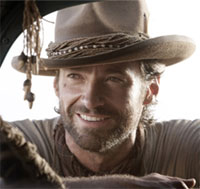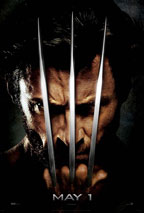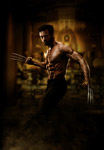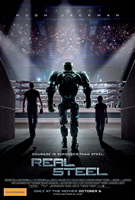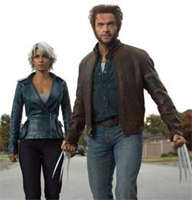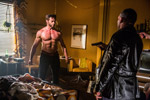Hugh Jackman X-Men: Days of Future Past
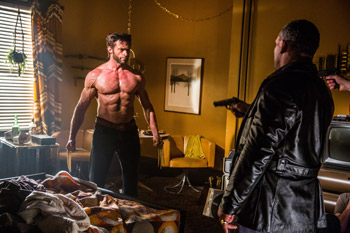
Hugh Jackman X-Men: Days of Future Past
Cast: Patrick Stewart, Ian McKellen, Hugh Jackman, James McAvoy, Michael Fassbender, Jennifer Lawrence, Halle Berry, Nicholas Hoult, Anna Paquin, Ellen Page
Director: Bryan Singer
Genre: Action, Adventure, Fantasy
Rated: M
Running Time: 131 minutes
Synopsis: The X-Men send Wolverine to the past in a desperate effort to change history and prevent an event that results in doom for both humans and mutants.
X-Men: Days of Future Past
Release Date: May 22nd, 2014
About The Production
The ultimate X-Men ensemble fights a war for the survival of the species across two time periods in X-Men: Days of Future Past. The beloved characters from the original 'X-Men" film trilogy join forces with their younger selves from the past, 'X-Men: First Class," in order to change a major historical event and fight an epic battle that could save our future.
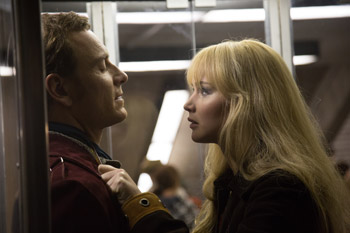 Director Bryan Singer reinvented the comic book genre as we've come to know it. With the debut of the hugely successful 'X-Men" in the summer of 2000, Bryan Singer established nothing less than a new creative aesthetic in his motion picture adaptation of the beloved comics stories and characters. That film was followed by Bryan Singer's even more successful 'X2" in 2003.
Director Bryan Singer reinvented the comic book genre as we've come to know it. With the debut of the hugely successful 'X-Men" in the summer of 2000, Bryan Singer established nothing less than a new creative aesthetic in his motion picture adaptation of the beloved comics stories and characters. That film was followed by Bryan Singer's even more successful 'X2" in 2003.
In 'X-Men: Days of Future Past," Bryan Singer returns to the director's chair to expand upon his vision for the X-Men universe. It's a huge and provocative story propelled by richly conceived characters. Producer Hutch Parker believes it is 'a combination of Bryan Singer's love, attention and respect for these characters" that makes the director's X-Men films so compelling.
Bryan Singer's involvement with the franchise from its infancy has bred close ties among both the returning production and acting teams. The new film reunites producer Lauren Shuler Donner, who has been involved in all the X-Men films; writer/producer Simon Kinberg, who was a producer on 'X-Men: First Class"; award-winning director of photography Newton Thomas Sigel, ASC, who has worked on seven projects with Bryan Singer; Oscar®-winning production designer John Myhre, who created the original X-Men world; and composer/editor John Ottman.
Bryan Singer also reunites with the cast of the original X-Men films, as well as the young cast of 'First Class," on which he wrote the story and served as a producer. From the original trilogy, 'X-Men: Days of Future Past" toplines Hugh Jackman, Patrick Stewart, Ian McKellen, and Halle Berry; and from 'First Class," it stars Jennifer Lawrence, James McAvoy, Michael Fassbender and Nicholas Hoult. 'It was a thrill to cast these people, both in the original X-Men films and also in -First Class,'" Bryan Singer notes, 'and at that time, several of them had little to no experience with films of this scope. Hugh Jackman came from a musical theater background. Jennifer Lawrence had done only small independent films like -Winter's Bone.' Over the years their careers have evolved, gained momentum and garnered tremendous recognition. The coming together of the original family and the new one has been exciting for us all."
Shuler Donner feels that the X-Men stories' rich and provocative themes drew Bryan Singer to that universe. 'Bryan Singer is very serious when it comes to the X-Men. He has always understood that the stories' underlying themes dictated a realistic treatment. The characters are flawed in ways in which the audience can identify. For example, Mystique wants to be proud of who she is, and Beast is self-conscious about his mutant ability and thus hides it. If the characters are grounded in reality, we will believe they can fly or heal or have extraordinary powers. All the other elements of an event picture are there – action, comedy, visual effects – but binding it together is human conflict and struggle. Bryan Singer is able to find depth and meaning in these comic book stories because he always pulls from within himself to find the pathos of the characters and the ethos of the world in which they live."
'The biggest reason I wanted to return to the X-Men," Bryan Singer confirms, 'is not just the enormous cast and the story's scope, but also the way it touches on things that haven't been experienced in X-Men films to this point, like time travel, that have blossomed in the comic books for many years. I think with each movie you need to do something new, and I can guarantee there's a lot of new stuff in -Days of Future Past.'"
From Script To Screen
While producing on 2011's 'X-Men: First Class," Simon Kinberg began conceptualising the storyline for the next X-Men feature with filmmaker Matthew Vaughn. They kept gravitating towards a story that juxtaposed two generations of X-Men.
They were inspired by the original 'Days of Future Past" comic written by Chris Claremont, who appears in a cameo role in the film. 'I think it makes perfect sense to have the past be set in the early -70s when the world was undergoing tremendous change and turmoil," says the comics legend. 'It certainly made chronological sense after -First Class,' which was set in the 1960s."
For Chris Claremont, the most important element of storytelling is taking the readers by surprise. He feels 'Days of Future Past" is a fantastic story to bring to the screen 'It's one of the most iconic stories in the canon," said Chris Claremont. 'That combined with Bryan Singer's vision and a cast of breathtaking variety and depth is very cool."
Time travel is a key component of both the comic and the new film, though Bryan Singer says 'X-Men: Days of Future Past" has an unconventional take on it. 'The difference is that we're not sending someone back in time, physically," he explains. 'Instead, we're sending a character's consciousness into his younger self. For the period that Logan is in the past, both past and future can co-exist. So I can have parallel action happening in both time periods.
'There's even a theory in quantum physics that describes that phenomenon," he continues. 'It's called the -superposition,' which claims that if we have not yet observed the outcome of an event, then the event hasn't truly happened. When the observer in our story, Wolverine, returns from the past, that collapses the superposition, meaning that everything he's changed in the past will then take hold in the future."
While Bryan Singer was exploring the logic and physics of time travel, Simon Kinberg was studying time travel literature and movies while working on the script. 'What is unique about -Days of Future Past' are the inter-cuts and interactions between past and future," Simon Kinberg agrees. 'One of the challenges of the project was not only keeping the logic intact but having the emotion feel continuous. The continuity of a young character and an older version of the same character created a new set of criteria. Keeping the emotional logical, not just the rational logical, was as challenging as the physics and psychology of time travel."
Simon Kinberg embraced the opportunity to work with Bryan Singer on a picture that combined the cast from the original film trilogy and the team from 'X-Men: First Class." 'These films are about being an outsider and finding a surrogate family when your own family won't accept you, and that all resonates with Bryan Singer," says Simon Kinberg.
Simon Kinberg says that one of Bryan Singer's greatest successes from the first 'X-Men" film was the casting of real dramatic actors. 'Bryan Singer didn't just hire genre or action stars; instead he cast powerful dramatic actors with theater backgrounds, including Ian McKellen, Patrick Stewart and Hugh Jackman. The same is true for the next generation: Jennifer Lawrence, James McAvoy, Michael Fassbender, and Nicholas Hoult, 'I'm not sure there's ever been a cast assembled that's quite as impressive in this one's range, experience and accolades."
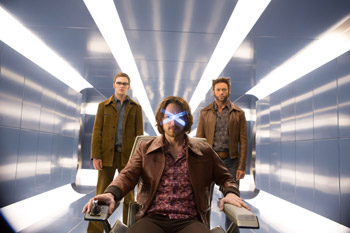 The X-Men: Past and Future
The X-Men: Past and Future
Hugh Jackman is the tie that binds the days of future and past. Hugh Jackman has played the character of Wolverine seven times over 14 years, which he describes as an 'incredible and rare gift." It is the character that has defined his career, but has never limited him as an actor. Hugh Jackman knows Wolverine better than anyone, and he describes Logan's return to the X-Men universe as a 'rebirth."
'Logan sees himself, for the first time in a long while, as part of the X-Men team," Hugh Jackman continues. 'He has come to terms with the fact that his anger is his greatest weapon. He is a warrior at peace with himself now. Being the only mutant with the capacity to heal himself, Logan volunteers to travel back in time to prevent the mutant apocalypse that the X-Men of the future are facing."
Wolverine's mutant abilities make him the only member of the X-Men capable of making the journey. Bryan Singer explains: 'Going back that far in time would rip apart the mind of anyone else. There's only one person who has the regenerative capabilities to survive the experience, and that's Wolverine. Since he doesn't age, when Wolverine's mind travels back to his younger self, Hugh Jackman was able to play both versions of the character. So that was a great opportunity for me and for Hugh Jackman."
Throughout their history, Charles Xavier has tried to instill the X-Men philosophy in Logan, and tried to reach out to him and calm his anger. In 'Days of Future Past," however, the characters reverse roles. Logan is now the one trying to convince a younger Charles to have faith.
'It's a kind of interesting poetry that plays out between the two," notes Bryan Singer. 'In the first -X-Men' film, Xavier helps Logan find a place in the world among the X-Men. In -Days of Future Past,' Wolverine must travel back in time and help Xavier put the shattered pieces of his life back together, and save the future."
It may be Wolverine's most difficult mission, for as he says in the movie, 'Patience is not my strongest suit."
Hugh Jackman was glad to be back on board even though he had completed 'The Wolverine" only a few months before he headed to Montreal to film 'X-Men: Days of Future Past."
That meant that instead of having to get in shape, he would simply have to stay in shape. Not that his regimen is simple. The actor's workout program included 45-90 minutes every morning before his hair and makeup call. His diet was also very strict, consisting mainly of broiled chicken and steamed vegetables. He ate every two hours, often in between scenes or rehearsals. Before shooting a specific scene he did a 15-minute extreme 'pump up" and finished the day with another 45 minutes at the gym.
Hugh Jackman was grateful for the opportunity to reunite with Halle Berry, Ian McKellen, and Patrick Stewart, with whom he's remained friends since their coming together in the first X-Men film, as well as with Bryan Singer, whom Hugh Jackman credits for his breakthrough in Hollywood films. Working with the young cast was also a treat. During one particularly telling moment, Hugh Jackman was walking down the Blue Hallway set with Nicholas Hoult, who said, 'I remember I was about eight years old when I saw -X-Men.'" That moment made Jackman realise how iconic the X-Men universe has become.
Another veteran of the franchise is Ian McKellen, whose professional relationship with Bryan Singer began on 'Apt Pupil," which Bryan Singer produced and directed. Since that first collaboration, Ian McKellen has marveled at Bryan Singer's enthusiasm for his projects and his dedication to the audience. Ian McKellen, too, has great respect for the audience. As a classically trained theater actor he draws from their energy and excitement for his performance.
The actor sees his character Magneto as a man with a conscience and a tragic past, whose grief leads him to discover his superhuman power to attract and control metal. In Ian McKellen's view, Magneto is the most powerful mutant, at least in terms of what he can physically accomplish. His grief and his rage put him at odds with society, but in 'Days of Future Past" he teams up with his rivals to ensure the survival of the mutants. Thanks to his new costume, Ian McKellen says his character 'looks like a man who means business," not that there was any doubt.
Patrick Stewart, who has played Charles Xavier/Professor X for over fourteen years, was not surprised that his character was returning in 'Days of Future Past." The success of the franchise has been impressive and Patrick Stewart could see where the stories were headed. And besides, 'It's going to take James McAvoy a year or two before he actually looks like me," he jokes.
Patrick Stewart was happy to again work with Bryan Singer, whose vision has helped define the ambitions and success of the films. One of the changes Patrick Stewart has witnessed over the years is the approach to setting up a project of this scale. He had never before worked on a 3D film nor seen animated pre-visualisations of his scenes. The process has become more complex but also more precise, all of which excited Patrick Stewart almost as much as finally flying the X-Jet. Moreover, this time Xavier has a wheelchair that 'actually hovers!" he marvels.
Scottish actor James McAvoy returns to his role as the young Charles, who in this story has lost hope, has had his spirit broken, and is more vulnerable than ever before. As Shuler Donner describes it, '-Days of Future Past' sets the stage for his evolution." For James McAvoy, this character has always had 'huge reserves of empathy. He can reach out to people, he can feel their pain and help them process it and help them become bigger and better individuals."
But at this stage in his life Charles has chosen to shut down. He's been hurt emotionally by the loss of his once-close friend Raven (Mystique), and he's been damaged physically, leaving him in a wheelchair. James McAvoy decided that this version of Charles was unlike any previous incarnation of the character. 'James McAvoy takes this role very seriously and approaches it from a completely human perspective as opposed to a superhuman perspective," notes Simon Kinberg. 'But the young Charles is human, and the turmoil he's experiencing in this film is real and relatable."
One of James McAvoy's most poignant scenes, an interaction with his older self, played by Patrick Stewart, occurred on James McAvoy's first day on set, and Patrick Stewart's last. The younger actor was a bit nervous. 'The scene represents the apex of [young] Charles' arc," he says, 'but playing opposite somebody who has portrayed this character for fourteen years made me a little uneasy." The two actors had never met before and barely had any time to rehearse. James McAvoy suggested that the two actors should play out the scene nose to nose, and Patrick Stewart agreed that the proximity to one another would create an important sense of intimacy.
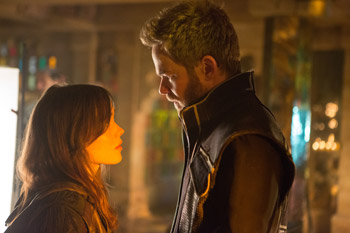 'James McAvoy just came in and did it," Bryan Singer recalls, 'and to see two incredibly fine actors from different generations act so harmoniously was an unforgettable moment for everyone."
'James McAvoy just came in and did it," Bryan Singer recalls, 'and to see two incredibly fine actors from different generations act so harmoniously was an unforgettable moment for everyone."
Michael Fassbender returns to his role as young Erik Lehnsherr/Magneto from 'X-Men: First Class." His character, explains Simon Kinberg 'in some ways finds his politics in this movie; he becomes more strategic, more like the Ian McKellen version of Magneto who has a political cause and a sense of how he can change the world."
Like most actors, Michael Fassbender appreciates working on a real set versus a green screen environment. He was impressed with the detail of the design and the craftsmanship that the art department had put into the construction of the sets. His favorite was the Pentagon prison cell that serves as his home in the film's early scenes and which helped the actor define Erik's character. 'The prison cell gave me an idea of a past life," said Michael Fassbender, 'and how Erik managed to get through those ten years of being imprisoned, around which I came up with the lotus idea. The -lotus' is Erik's state of Zen, where he spends hours in his cell elevated, sitting cross-legged in a meditative state, gathering his strength."
A major source of conflict between Michael Fassbender's Magneto and James McAvoy's Xavier is Raven/Mystique. Academy Award® winner Jennifer Lawrence again portrays the mutant, who in 'X-Men: First Class" was a promising student of Xavier, before adopting Magneto's darker world view. Now, Raven has taken on the identity of Mystique and turned against humans.
'Raven has been on her own in the ten years since the events depicted in -First Class,'" says Bryan Singer. 'She is no longer the girl that grew up with Charles, nor is she Erik's disciple. She's found her own path, of vengeance, hunting those responsible for abducting, killing and experimenting on mutants. At the same time, she's seeking vengeance against Trask, and that breaks Charles' heart because he knows that will set in motion a very dark future that will lead to the destruction of mutantkind. So it becomes a battle to save the future, and also a battle for Raven's soul."
One character firmly situated on the dark side is Dr. Bolivar Trask, played by Peter Dinklage. Trask is the inventor of the enormous robotic weapons, the Sentinels. His aim is to unite the human race by eliminating its evolutionary rivals, the mutants. In fleshing out the character, Bryan Singer and Simon Kinberg created, says the director, 'emotionally logical reasons" for Trask wanting to hunt down and exterminate mutants. Trask had to be more than a stock villain that was seeking to destroy people for being different.
'In a twisted way, Trask longs for peace," Bryan Singer elaborates. 'He believes that mutants are so powerful they could pose a threat to humanity – and that mutants are to modern man, what modern man was to the Neanderthals," which led to the latter's extinction. 'So what better way to unite people, he reasons, than against a common enemy that could lead to humanity's extinction?"
The idea of a multi-layered villain led to the casting of Peter Dinklage. 'Peter Dinklage brings not just the notion of being different physically but he brings a real depth of emotion and humanity to his work," says Simon Kinberg. 'With Peter Dinklage, Trask becomes relatable. He's somebody the audience actually cares about even as they root against him."
The actor in turn praises Bryan Singer and Simon Kinberg for telling a story, set in two time periods, that retains its integrity and logic. Peter Dinklage is enthralled by the characters – their inner struggles, emotional and psychological strongholds, and relationships to one another. 'Charles and Erik's relationship is amazing," said Peter Dinklage. 'It's so beautifully connected. There's such compelling loyalty with old friendships like that, and it's really, really done well here."
Academy-Award winning actress Halle Berry has now played her character Storm four times. She feels a kinship with the mutant and compares returning to the role to reuniting with an old friend. Halle Berry sees her role as that of the teacher, a direction that was developed with Bryan Singer in the original 'X-Men."
Still, Halle Berry admits there's much more to Storm than books and pencils. Storm is one of the more powerful mutants, and she is instrumental in trying to protect the X-Men from the Sentinels. 'Storm can control the weather and when the team is in a battle she's the first one to be sent out into it," she explains.
Academy Award nominated actress Ellen Page returns to the X-Men universe as Kitty Pryde, a role she first took on in 'X-Men: The Last Stand." In 'Days of Future Past" Kitty's ability allows her to send Wolverine's consciousness back in time in order to try and save the mutants from annihilation at the hands of the Sentinels.
Ellen Page says Kitty is a strong, 'badass" female character, and she is certain that X-Men fans will not be disappointed with the story, which she refers to as 'epic in scope." For Ellen Page every day on set, surrounded by 'incredible actors and gorgeous costumes on amazing sets," was a thrill. She admires Bryan Singer for being able to manage a film of mammoth proportions and Simon Kinberg for writing an elaborate and intricate script. As for the cast, Ellen Page regards them as 'legends and I get to sit and watch them work. It was awesome."
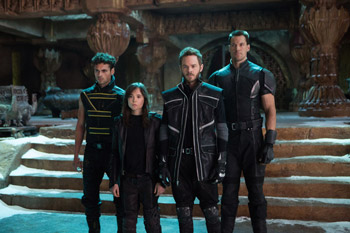 Nicholas Hoult returns to his 'First Class" role as Hank McCoy/Beast, with a broader sense of his character's emotional turmoil. Hank is uncomfortable in his blue skin, and insecure and ashamed of his mutation. In the ten years since the events depicted in 'First Class," he has lived in the mansion with Charles, and invented a serum that suppresses his and Charles' mutation. Charles uses it to be able to walk again, but one of the side effects is the loss of his heightened mental capacity. Additionally, Hank's connection to Raven is further explored in 'Days of Future Past," and although he can accept her blue form, Hank realises he is still uneasy in his own.
Nicholas Hoult returns to his 'First Class" role as Hank McCoy/Beast, with a broader sense of his character's emotional turmoil. Hank is uncomfortable in his blue skin, and insecure and ashamed of his mutation. In the ten years since the events depicted in 'First Class," he has lived in the mansion with Charles, and invented a serum that suppresses his and Charles' mutation. Charles uses it to be able to walk again, but one of the side effects is the loss of his heightened mental capacity. Additionally, Hank's connection to Raven is further explored in 'Days of Future Past," and although he can accept her blue form, Hank realises he is still uneasy in his own.
Nicholas Hoult was grateful for the opportunity to work so closely with James McAvoy, whom he considers a consummate actor. The two analyzed their scenes together and James McAvoy's ideas inspired Nicholas Hoult to broaden his perspective of the characters' relationship. 'Working on -Days of Future Past' has left a remarkable impression on me," he said. 'It's such a colossal project spread across two time periods, and has dozens of characters each with their individual story and emotional arc."
Quicksilver is another key mutant character in the 1970s scenes. The young Charles, Logan and Hank enlist him to help break Magneto out of the Pentagon prison.
Quicksilver's power, as his name suggests, is his superhuman speed, which up until meeting the X-Men, he has employed for petty theft and teenage mischief. 'Wolverine knows Quicksilver in the future," says Bryan Singer. 'But in the past, he's a kleptomaniacal kid with an attitude. The only way they can enlist Quicksilver's help is to appeal to his penchant for troublemaking, asking him if he'd like to break somebody out of the Pentagon."
Bryan Singer and director of photography Newton Thomas Sigel used high-speed phantom cameras and photo-sonic technology to film the Pentagon break-in and escape sequence, one of the film's most technically intricate and visually arresting scenes. The scene was shot at 3000 frames per second with Quicksilver running along the walls in the Pentagon kitchen, parallel to the ground. 'We've never experienced this on film before," says Bryan Singer.
The technology required the use of enormous lights rigged above the set, each powered by about 40,000 watts. 'The set was so brightly lit, we had to wear sunglasses just to work on it," Bryan Singer adds. 'The actors had to close their eyes until the moment they started shooting."
Shawn Ashmore, as Bobby/Iceman, also returns to the X-Men universe. In 'Days of Future Past," he teams up with Kitty, Bishop and Colossus, who are all on the run in a dark and desperate future. Shawn Ashmore says the characters are hardened by their circumstance. 'They are in grave danger on a regular basis," said Shawn Ashmore, 'and Kitty's ability to travel to the immediate past barely saves them."
Shawn Ashmore was thrilled that Iceman got to exhibit his powers in a high intensity action sequence that included an ice slide, what he remembers as 'the ultimate superhero moment for me."
Canadian Actor Daniel Cudmore was equally pleased to be returning to the X-Men universe. Daniel Cudmore's character has the ability to transform his skin into organic steel, giving him enormous strength, rendering him nearly indestructible.
French actor Omar Sy ('The Intouchables") plays Bishop, one of the new mutants added to the X-Men universe. Bishop, who appears in the future, is fierce and intimidating. He has the ability to absorb radiant and conductive energy, which he uses to power his plasma weapon. Bishop is also able to time travel with the help of Kitty and serves as a key character in depicting the mutants' predicament in the dark future. Bishop's backstory is turbulent and painful: he bears an 'M" scar over his eye which he got as a prisoner of a mutant camp.
Adan Canto's character Sunspot fires powerful solar flares. To immerse himself in the role, Canto researched Sunspot's story. Sunspot, he says 'is loyal and passionate, but the tragic death of his love leads him to anger and rebellion."
Another mutant new to the movie franchise is Warpath, portrayed by Booboo Stewart. Warpath, also known as James Proudstar, possesses elevated senses, including super sight, smell and hearing. Warpath is one of the future mutants who help defend the X-Men from the attacking Sentinels. The X-Men's refuge in the future, a monastery, serves as a kind of haven for the remaining mutants as they fight for survival. Warpath is a weapons master and gets to wield 17-inch long blades. For Stewart, who has been training in martial arts since he was three, the character was a perfect fit.
A third mutant new to the movie franchise is Blink, played by Fan Bingbing. Blink has the ability to teleport herself, others and large objects. She uses her power to displace things, in particular her enemies or large projectiles. The SFX team was able to bring her powers to light by all the practical interactions around her, like blowing up, knocking over or moving columns and pillars on the Monastery set, where some of the biggest special effects of the film took place.
Australian actor Josh Helman portrays the fourth incarnation of the character Bill Stryker, who has appeared in 'X2," 'X-Men Origins: Wolverine" and 'X-Men: First Class," each time played by a different actor. Josh Helman felt he had big shoes to fill however peripheral his role may seem. 'Bill Stryker is such a complex character because he can instill fear despite not having any extraordinary powers," he says.
Lucas Till, who appeared in 'X-Men: First Class," returns Alex Summers, known as Havok, whose mutant power is shooting cosmic energy out of his body. In 'Days of Future Past," Havok is enlisted in the special mutant platoon serving in Vietnam when he gets rescued by Mystique, with whom he shares a playful camaraderie.
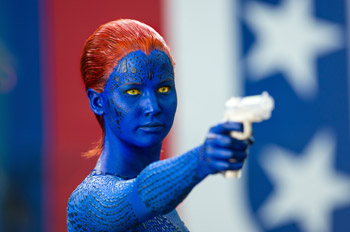 About The Production
About The Production
Principal photography on 'Days of Future Past" began April 15, 2013 in Montréal, Quebec, Canada. The production was based at Mel's Cité du Cinema (commonly referred to as simply 'Mel's"), a 27 acre studio facility on the Île de Montréal overlooking the St. Lawrence River. Comprised of seven soundstages, totaling 116,500 square feet as well as 143,000 square feet of office space, 'Days of Future Past" morphed and mutated every square foot to meet its massive filming needs.
Two-time Oscar-winning production designer John Myhre ('Memoirs of A Geisha," 'Chicago"), along with his talented art department led by supervising art director Michele Laliberte ('The Curious Case of Benjamin Button," 'The Day After Tomorrow") and Academy Award-winning set decorator Gordon Sim ('Chicago") had the daunting task of overseeing the design, creation and construction of the film's forty built sets, as well as the production design and art direction of the movie's thirty-six practical locations in and around the metropolitan Montréal area.
John Myhre, who served as production designer on Bryan Singer's original 'X-Men," was tasked with designing the biggest X-Men film to date taking place in two time periods, the 1970s and the not-so-distant future. John Myhre saw it as having to design two films while staying true to the concept of the whole. He tried to visualise the cuts between past and future and how they would complement one another aesthetically.
One of the film's largest stage builds was the Exterior Monastery in the future, a monolithic ancient cloister built into a mountainside. Bryan Singer notes that the monastery's inner sanctum, where Wolverine is in statis as his consciousness travels back in time was modeled after a chapel he'd seen pictures of. Its stained-glass fixtures provide, says the director, 'a kind of ethereal, almost magical quality. I didn't want the monastery to be dour; I wanted it to have a kind of holiness, because something kind of magical is happening there."
John Myhre and company used every inch of the 36,500 square feet of Stage H at Mel's to house the gargantuan set, where Hugh Jackman, Halle Berry, Patrick Stewart and Ian McKellen are reunited in the story. It is also the site where the mutants face their greatest foe of the future.
Like Bryan Singer, John Myhre felt that with such an impressive cast, creating a real environment for them to get excited about was paramount. 'Bryan Singer told me that whenever possible we should build a practical set," recalls John Myhre. 'So, in the case of the Monastery, you could even smell the burning incense."
'The Monastery set is a mash-up of a classic aesthetic and a sci-fi aesthetic," says Simon Kinberg. 'It was a neat juxtaposition to see this ancient monastery that has been around for thousands of years surrounded by all the sci-fi elements like the new X-Jet and the robot Sentinels."
Inspired by many forms of Asian architecture – including Chinese, Japanese, Indian and Indonesian – John Myhre designed the set as if the entire structure was carved out of a single rock by ancient monks. The Monastery has three sections: the crenelated 'Great Wall" built for protection; the 'Courtyard," composed of a series of pagoda-like structures used for prayers and gatherings; and the 'Colonnade," a pillared portico which serves as the last line of defense against attack as well as the doorway to the Monastery's inner sanctum.
To John Myhre, this inner sanctum is the heart of the film. He wanted the set to feel distinctive, reminiscent of a sacred place. Working with director of photography Newton Thomas Sigel, the designer added various features to different elements on the set, including mirrors on rotating columns and swiveling panel walls. This allowed Sigel to have unique camera angles and play with optical illusions, much like a carnival fun house. Thomas Sigel and John Myhre had a close line of communication; Thomas Sigel's ideas about lighting and mood for a certain shot had to fit into John Myhre's sets and vice versa.
Thomas Sigel agrees that it felt like two distinct movies were being shot back-to-back. 'This was a fun one for me," he says. 'I lived through the -70s so I had a cultural reference for the -past.' In creating the -future' there is no cultural memory and no reference to go on. So my approach was to create a visual vocabulary to get my ideas across. The past is warmer, grainier and almost muddy, whereas the future is cooler, darker and starker."
The second of the two largest set constructions is the Exterior White House Lawn (in the 1973 scenes), site of the film's climactic battle. The set was built on Mel's 'backlot," (i.e. an overflow gravel parking lot), and John Myhre designed a decidedly unconventional set. He and his teams constructed a square 'box" comprised of 100 cargo-shipping containers – five containers long, stacked five high on each of the four sides of the box – creating a 40,000 square foot interior floor, which was sodded and landscaped to serve as the lawn of 1600 Pennsylvania Avenue. Standing at four-stories tall, over 10,000 yards of green screen fabric was used to drape the interior walls, providing a canvas on which the Simul-Cam technology could project an image of the actual White House exterior, while the native 3D cameras were shooting live footage of the cast.
Other major sets include the iconic Cerebro and adjoining Blue Hallways (constructed on Montréal's 30,000 square foot Alstom Stage). For these sets, John Myhre literally dusted off the old blueprints and made a replica of the originals – from the first 'X-Men" film. Hugh Jackman remarks, 'For me, and for Halle Berry, and Patrick Stewart, walking down those hallways was déjà vu – like we'd gone back fourteen years in time."
Xavier's Mansion was constructed on a stage at Mel's. Because the film takes place in the past and future, both Cerebro and Xavier's Mansion were in a constant state of flux, bouncing back and forth between their temporal setting, as the film's shooting schedule dictated which scenes were to be shot on a given day. In previous films the Mansion was shot in various locations, but a suitable site could not be found in Montreal. John Myhre reconstructed the interior of the mansion used in the original 'X-Men," which was Casa Loma in Toronto.
Additional constructed sets include the 1973 basement bedroom, where we first meet Quicksilver. One of the other sets is the 1973 Oval Office, the workplace of then President Richard Nixon, whose administration figures prominently in the story. John Myhre's replica was historically exact and accurately detailed down to the decorative dental crown moldings.
The X-Jet, which John Myhre describes as a 'fortified warship," was one of the most challenging sets from a design and build perspective. 'The X-Jet felt true to the original X-Jet of the comic and of the earlier movies, and yet it was completely new and different," says Simon Kinberg. 'The team wanted to create a sleek futuristic looking vessel without visible joints, using various shapes, scales and layers."
At one point during the productionJohn Myhre's team included three hundred craftspeople: carpenters, painters, plasterers, sculptors, set designers and decorators, and prop people, among others. The unprecedented scale of the project was evident in every aspect of the shoot.
When creating props like the Cerebro helmet, many elements had to be accounted for once the final design was approved: what materials would be used both for comfort and stylistic consistency; how would it fit on John McAvoy's head; how would it catch or reflect light and appear on camera. The 1973 Cerebro was made to reflect a progression from the original in 'X-Men: First Class." The future Cerebro was simpler, more compact, streamlined and very light.
The filmmakers' designed the past version of Xavier's wheelchair to reflect ones that had already existed in the X-Men universe, and for the future version she worked with John Myhre to come up with something unique. In considering future technology they concluded that the chair no longer needed wheels and could instead move using magnetic force.
Costume designer Louise Mingenbach ('The Usual Suspects," 'X-Men," 'X2") and her team prepped for five months before the start of principal photography. In addition to designing and building, from scratch, all of the principal actors' hero costumes, including those inspired by the 1970s, Louise Mingenbach drew upon the resources of more than ten costume rental houses in the U.S. and Montréal and scoured retail vintage stores, as well as vintage clothing shows across the country.
Louise Mingenbach and Bryan Singer defined the not-so-distant future and took into account the situation in which the characters find themselves. 'They are being hunted; therefore sleek, clean, shiny suits were not going to work," said Louise Mingenbach. 'It was difficult to make the intricate pieces and hand them over to be destroyed, but they came back looking more realistic, like they had been in battle."
Louise Mingenbach designed and produced custom fabrics, each cast member was measured and fitted, and every detail was handcrafted and molded to the actors' dimensions. Getting into them was nothing like pulling on a loose pair of jeans. Some of the costumes weighed dozens of pounds or more with the addition of weapons and props. Each actor had to be helped in and out of these elaborate wardrobe pieces. Out of the nearly two-dozen superhero costumes made for this film, each one customized to the mutant powers of its character, the hardest to make was for the one mutant who had never previously worn a costume: Professor X.
Before sourcing the 1970s period costumes, Louise Mingenbach discussed her ideas with John Myhre. The two agreed that it would be important to find the patterns, textures and colors that represented the decade. The color palette of rusty browns, oranges and greens really brought the period to life on screen. Mingenbach and her team spent months collecting pieces from costume rental houses, vintage stores and on-line. Truckloads of clothing were shipped to Montreal from across the U.S. and Europe.
The costume department had to set up a massive tent in one of the parking lots next to the stages to accommodate the department store-sized wardrobe. On numerous shoot days the team had the task of dressing up to 600 extras in period clothing, the tent served as their base camp. The task took tremendous organization not only for the costume department but make-up, hair and props as well.
'The costumes in -Days of Future Past' are really more about each mutant's individual powers rather than looking like they are part of a team of superheroes," says Louise Mingenbach. 'Bryan Singer has always understood and been insistent about the fact that film is a totally different medium than a comic book, so the costumes have to look real and practical. It's all about finding a balance – the sweet spot – between the clothing representing the character but also trying to give the audience something new and different."
The Sentinels
In the year 2000, when 'X-Men" was released, the technology to do some of the things the filmmakers had imagined was simply not yet available. Fourteen years later getting realistic, believable effects is no longer a problem. For example, the Sentinels, 18-foot tall mutant-destroying robots, beloved by X-Men fans, would not have been served justice with older technologies in VFX. There have been many robot films in the last decade, but what Singer wanted to achieve was not possible until now. In 'Days of Future Past," Singer introduces two versions of the Sentinels, those of the past and the evolved version of the future.
'The Sentinels are mutant-killing robots, and the program to build them began in the early-1970s," the director explains. 'They have the ability to target the mutant gene, and then isolate and target mutants. The Sentinels of the future are an evolution from those developed in the -70s. The Future Sentinels are particularly dangerous because they have the biomechanical technology to adapt to the mutants' powers, take on their appearance, and destroy them. There are thousands and thousands of them on the hunt."
WhileJohn Myhre designed the Sentinels of the future, Special effects supervisor Cameron Waldbauer and his team were the custodians of the Sentinel we see in the scenes set in 1973, built by Legacy Effects in Los Angeles. The 1970s Sentinel took eight weeks to build and all of its parts are movable and adjustable. Although there are numerous sentinels both in the past and future, only one of the -70s model was built for a few practical reasons besides cost. The actual eighteen-foot figure helped director of photography Thomas Sigel frame the shot and served as an indication of relative proportion for the VFX team who would multiply the robots in post-production.
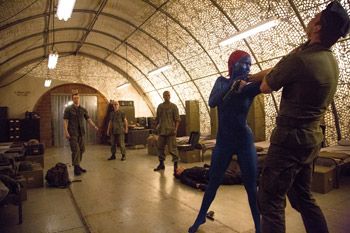 'X-Men: Days of Future Past" is the biggest X-Men film to date, a validation of the success of the franchise, but more importantly a culmination of tremendous creative energies from its cast and filmmakers. It is a story that reaches across all boundaries to all audiences.
'X-Men: Days of Future Past" is the biggest X-Men film to date, a validation of the success of the franchise, but more importantly a culmination of tremendous creative energies from its cast and filmmakers. It is a story that reaches across all boundaries to all audiences.
At last year's Comic-Con convention when almost the entire cast stood on stage in front of their fans, the roar of applause was deafening. The emotion was overwhelming. Singer recognizes that kind of emotion. 'If I had been at Comic-Con 25 years ago and Han Solo and Luke Skywalker and Princess Leia walked across the stage I would have freaked out, too!" he says. For Bryan Singer, the X-Men stories are 'modern day mythologies. I feel extremely at home with this universe. I love being in it, exploring it and having a lot of fun with it." His ability to articulate these stories as a filmmaker is unparalleled.
Which means that for the X-Men, there is hope for a bright future.
X-Men: Days of Future Past
Release Date: May 22nd, 2014
Review: Really enjoyable, fast paced action with great effects. X-Men: Days of Future Past explores the characters we love even more plus adds a few new ones.
Have You Seen This?
MORE
- Mission: Impossible Fallout
- Glenn Close The Wife
- Allison Chhorn Stanley's Mouth Interview
- Benicio Del Toro Sicario: Day of the Soldado
- Dame Judi Dench Tea With The Dames
- Sandra Bullock Ocean's 8
- Chris Pratt Jurassic World: Fallen Kingdom
- Claudia Sangiorgi Dalimore and Michelle Grace...
- Rachel McAdams Disobedience Interview
- Sebastián Lelio and Alessandro Nivola...
- Perri Cummings Trench Interview

